|
Do you have an iPhone or a Samsung? What’s your favorite running shoe? Music streaming service? The answers don’t really matter, but across all these scenarios, it’s common to find consumers who are fiercely loyal to their preferred brands. And this is great. You like what you like. It ensures you get the quality products you expect and it provides your favorite companies with continued support. Wouldn’t it be great to develop this kind of following for your business? At the end of the day, even if you try to play it cool, you know you’re hoping for it. So let’s talk about brand loyalty. What, exactly, is it? What’s the psychology of it? And how can you develop it? What Is Brand Loyalty Brand loyalty is the faithful disposition to continuously purchase products or services from a specific company. It doesn’t matter how expensive it is. It doesn’t matter how hard it may be to find, or how many hours they have to stand in line, or at what ridiculous time they have to wake up in the middle of the night to place an online order as soon as there’s a new product launch. Brand loyalty goes hand-in-hand with consumers’ emotions. Maybe they love the product. They trust it. It makes them feel happy, excited, or rejuvenated. Even if there are competitors offering similar products, in the mind of the loyal customer, anything other than their preferred brand would be subpar, so why even consider it? Why Is Brand Loyalty Important While at face value, it seems clear why brand loyalty is important, it’s good to keep in mind what makes it so valuable: It’s More Cost Effective To Retain Existing Customers Acquiring new customers is five times more expensive than retaining existing ones. Granted, if you want your business to be sustainable long-term, you do need to have a strategy to get new customers through the door on a regular basis. However, nurturing your existing ones will keep the money coming on consistently. Repeat Customers Typically Spend More Repeat customers are already familiar with your brand identity and with your products. They know they love them. They’re also willing to spend more on them. Ask a Mac person if they would prefer to drive an hour away to an Apple store to get what they truly want, or if they’d be willing to settle to go to the Walmart around the corner and get whatever tech product’s on sale. In addition, it’s a lot easier to sell to them during new product launches, as well as cross-sell or upsell when they’re already buying something else. You’ll Have Higher Conversion Rates A loyal customer is more likely to continue buying from you repeatedly. You already know what they like, and don’t have to spend as much time trying to figure out how to convince them that you’re God’s gift to the industry. In fact, they have about a 70 percent chance of converting. Repeat Customers Are a Source of Referrals Not only will you have loyal customers coming back, you’ll also likely see their friends and family who have to hear them wax poetic about you on a regular basis. You can very well ask for the referrals, but you won’t really have to, since people love to talk about their newest gadgets and share info to validate their opinions on social media. The Psychology Behind Brand Loyalty When customers develop a sense of brand loyalty, they’re building an emotional connection to a business. Not only do they feel like they belong, they also get excited to represent a company in some way, as a fan and an advocate. Human beings can be complex — which is why before you can earn this level of loyalty from your audience, you first need to better understand the psychological side of the consumer-business relationship. From the company standpoint, you deliver value by crafting a consistently exceptional customer experience. Consumers start to develop positive associations with your brand and have a clear set of expectations every time they interact with your brand. This powerful connection comes down to needs and actions, which is where Maslow’s Hierarchy of Needs and Aristotle’s Seven Causes of Human Action come into play. Maslow’s Hierarchy of NeedsAbraham Maslow’s 1943 paper introduced this psychological theory on human motivation and development. This theory suggests that human needs fall into six categories:
The concept is that these needs are hierarchical, and humans need to fulfill one category before moving up the pyramid to acquire the next need. The first category — physiological — involves the basic essentials, like food, water, shelter, clean air, and clothing. Once you fill this need, you move to the second category, which is safety. These needs include family, stable employment, good health, and a sense of personal security. Then, you need a sense of love and belonging, which is the third category. With strong friendships, intimacy, and other meaningful relationships with others, you’re then able to seek the fourth category: esteem. This is where you cultivate confidence, respect for and by others, and feelings of recognition and freedom. The first four layers of the pyramid are referred to as deficiency needs, meaning that if you don’t have them, you experience tension and anxiety. At the top of the pyramid is self-actualization, where you seek personal growth and realizing your full potential, which is a highly personal experience. Each category becomes less essential to human survival as you move up the pyramid, but they all play a role in the human experience on an emotional level. Marketers focus on each level and strive to address these needs for consumers. Aristotle’s Seven Causes of Human Action What causes humans to make decisions and take action? This is a timeless consideration that Aristotle sought to answer in his treatise called Rhetoric, which dates back to the fourth century BCE. One of his most noteworthy quotes appears in this publication “All human actions have one or more of these seven causes: chance, nature, compulsion, habit, reason, passion, and desire." This applies directly to the customer experience, where you can boil down buying decisions to seven causes. Chance Customers can sometimes happen upon something your company offers by chance, without any fixed purpose behind it. They might stumble upon a brand and buy something without a clear motive. Nature Sometimes, there is a force of nature influencing a customer’s decision to buy something. For example, hunger might cause you to eat at a nearby restaurant. Compulsion Often, buyers will simply act on instinct and desire, making an impulsive decision to buy a product or service. Perhaps an irrational behavior moved someone through the buyer’s journey, without any feeling of clear desire or rational thought. But regardless of the impulse, the purchase is made on their own terms, not simply by chance. Habit Humans are habitual by nature, so sometimes they purchase things based on their previous patterns of buying. For example, if you always shopped at a supermarket nearby, you’re likely to stay in that habit and continue shopping there for the sake of consistency and comfort. Reasoning At some point, a buyer makes their decision after determining the product or service will be useful for them. In other words, they’ve thought about it, researched it, and identified a rational motivation to make the purchase. Passion Emotions fuel decision making for people sometimes, so when they’re triggered by an emotional experience, they feel compelled to buy. A purchase is tied to satisfying their feelings in some way. Desire Without rational thinking and reasoning, people can feel overcome with an intense feeling of wanting and desiring. Buyers simply want something (like a kid wanting a candy bar they see near the checkout line) and the purchase creates a positive feeling, often one of satisfaction. These psychological theories are important to understand when you’re aiming to foster loyalty. Companies that appeal to the inherent needs of humans and that touch on the causes behind action win big by developing customer loyalty and brand loyalty. Customer Loyalty vs. Brand Loyalty These terms, while closely aligned from a conceptual standpoint, are often considered to be interchangeable, but there’s actually a distinct difference between the two. Customer loyalty centers on the consumer and the power they have when it comes to their personal spending. Money plays a big factor in customer loyalty. If you’re offering the lowest prices and best deals, customers will stick with your company. On the other hand, brand loyalty is achieved through the customer’s perception of a brand. How they perceive companies is less about pricing than it is about other important aspects — a company’s reputation, the customer’s experience they’ve already had with a company, the company’s marketing efforts, overall messaging, and much more. These two concepts are equally important and have a major impact on your business as a whole. With competitive pricing and consistent special offers, you can develop customer loyalty. And by staying true to your company’s values and delivering high levels of quality in your products and services while serving and supporting your customers well, you earn brand loyalty. At this point in the customer experience, they don’t feel a need to check out your competition because you consistently provide value for them. When you can achieve both these levels of loyalty, your customer retention soars. You even turn happy customers into loud and proud advocates who are happy to refer other potential buyers to your company. And the ultimate level of loyalty is attained when your community of customers (and some may even call them fans) reaches a cult-like mentality. How to Develop Brand Loyalty Now that we’ve set the stage and explained what drives customers (well, people in general) to behave a certain way, let’s go over several steps you can take to develop brand loyalty: Be Customer-Centric. Even if you graduated summa cum laude from Harvard Law School or built a rocket ship that can get you to the moon and back in 10 minutes, the spotlight should be on your customers. They’re not contacting you because they want to know what you’ve accomplished. They’re here because they need something. So provide it. Make it all about them. Be empathetic. Train your team well so that they can offer exceptional customer service. Make interactions with you as easy as possible. Ask for their feedback and take it seriously. Invest in customer service software that will help you make it all go smoothly. Provide Value at Multiple Touchpoints. You should always provide value to your customers — and do so in a way that makes you stand out from competitors. And this doesn’t just apply to the goods or services they may purchase from you. You can offer value for extended periods of time even before a person becomes a customer by using inbound marketing. You can get started by researching your buyer persona. Once you identify their pain points, offer solutions through your online content: explaining a concept, posting infographics, how-to guides, video tutorials, product comparisons, etc. Engage With Customers. Engaging with customers makes them feel seen and heard — both offline and online. Connect with them by asking them what they want, what they’d like for your business to offer, providing a live chat, sending follow up emails, responding to comments and reviews on social media. Even if you think that you don’t have enough time to do the latter, you can use social media management tools to make this task easier for your team. Personalize Your Customer Service and Support. Not everyone’s at the same stage in their buyer’s journey. Therefore, everyone who comes into contact with your business needs to receive different types of information and service. You should also greet them by name if they’re a repeat customer, make suggestions based on their needs and past purchases, take into account their preferred method of contact, and give your employees the authority to make decisions on the spot, to make the customer experience a customized one. Be Proactive in Addressing Customer Needs. Don’t wait until a customer needs a solution to reach out to them. Provide them with free content that educates them on the topics they’re interested in (as long as they’re relevant to your business!). Admit mistakes before they find out about them — and let them know how you’re planning on rectifying them. Make suggestions based on their anticipated needs: If you sell running shoes and you know they’re training for a marathon, reach out when it’s time to replace them. If you’re an MSSP and you recently found out about a new cybersecurity threat, ramp up their security before they contact you first. You get the drill. Treat Your Employees Well. Have you ever been to a business where it’s clear the employees are just there for a paycheck? They may seem uninterested, uninspired, or even just plain miserable. Chances are that the reason is because they hate where they work. And hey, don’t go looking for ways to disparage them. Wonder why their employer isn’t paying attention to this issue. On the other hand, when employees are trained properly, given the opportunity to excel, and empowered to make decisions, they feel valued and are happy to come to work. Pay them well. Promote from within. Listen to what they have to say. This will reduce your turnover rate and motivate them to do their best in their job roles. And customers will definitely notice. Go the Extra Mile. You already know what it is your customers want — and so do your competitors. So constantly look for ways to exceed their expectations. Pay attention to their purchasing patterns and listen to what they have to say. This will help you identify and anticipate their needs and offer solutions. Always be polite, even if you’re having a bad day. Send a handwritten thank you note (or hey, send them flowers if they’re going through a hard time and you’ve known them for a while). Zappos is a master at getting this done. These actions will make customers feel happy to do business with you and keep them coming back for more. Provide Excellent Customer Support. Alright. Listen up, because it seems like a lot of companies are falling behind on this — and it’s not doing you any favors. Customer support is the backbone of any business. Even if you truly sell the most wonderful goods ever created by humankind, if you treat customers poorly (or if they leave feeling angry or frustrated after an encounter with you), they’re not going to come back. In fact, 96 percent of respondents in the Microsoft State of Global Service Report stated that customer service plays a role in their choice of and loyalty to a brand. Ask for Customer Feedback. What’s your favorite color? While I could try to do an educated guess by looking at your social media posts, past purchases, and what you like to wear, the only surefire way to learn this is to ask you directly. So yes, by all means, do market research. It’s crucial to be successful at what you do. However, when you ask your customers directly, you’re letting them know you value their opinion — especially when you implement good suggestions. This also helps you gain insights on how to improve your offerings and give them exactly what they want. And wouldn’t you become a raving fan of a business who does that for you? Build Relationships with Customers. Life would be pretty awful (and everyone would be pretty cynical) if every single interaction with people you encountered was exclusively transactional. Pay for a service, faceless person. Bye. That bedside manner would not gain you any fans. Customers are the reason you exist; the reason why you are able to take your family on fun vacations to Aruba. So go out of your way to make them happy. Establish conversations with them. Find out their likes and dislikes. Why do they need what they need? Show your appreciation by rewarding them (more on that below). Reward Loyal Customers. Rewarding loyal customers is a way to retain your existing base, which we’ve already discussed is more cost effective and leads to higher conversion rates. This can include sending them samples, announcements of pre-sales on items that sell fast, letting them know about a rewards program, offering referral discounts, coupon codes, or a free item with a purchase of another product. Do keep in mind that you should be strategic about this. Get to know your customers so that you can actually offer them rewards that are relevant to them. Stay in Contact With Customers. Staying in contact with customers is a way to nurture them (aka, letting them know that you value their support). There are many ways to do this without looking like you’re pushing for another sale. You can send birthday and/or anniversary cards, discount codes for items they purchase regularly, recommendations based on their previous purchases, online surveys asking for their feedback, emailing them newsletters, and even just engaging with them on social media. This lets them see that they’re more than a faceless number. 23 Brand Loyalty Examples A cult-like brand is one that delivers a superior level of customer loyalty. Beyond that, customers feel a sense of ownership with the brand and its products, and no other brands can compare. A cult-like brand doesn’t just fizzle out like a fad; its customer loyalty is sustained over time and continues to build a close-knit community of dedicated followers. In the end, these brands not only provide customers with a product, but a lifestyle they can continue to embrace for a lifetime. True fanatics will not only remain loyal to your brand, but they will also tell their family members, friends, and social networks why. Loyalty even yields more revenue — a staggering 43% of U.S. customers spend more with the brands and companies they are loyal to. There are many ways to build that type of brand loyalty: From simple acts of kindness, like donating a portion of profits to organizations that are important to your consumers, to creating a social sense or organization around the brand. Here are 23 examples of companies that embody the term brand loyalty and, in turn, have developed a following like no other. 1. Apple Apple is the epitome of a cult brand. Since the beginning, they’ve built machines that are designed around their customers’ needs. They’re constantly seeking feedback and engaging in conversations with customers about new products. As a result, Apple provides users with the features they want and has built a loyal community. 2. Amazon Amazon has grown into the largest online shopping destination by creating a magnificent customer experience. From allowing customers to provide feedback, to free returns and fast shipping, Amazon embraces the phrase, “The customer is always right!” 3. Lululemon Since their beginning, Lululemon has strived to be more than just a workout gear shop. In their own words, they “wanted to create a community hub where people could learn and discuss the physical aspects of healthy living, mindfulness and living a life of possibility.” Lululemon’s ambassador program continues to support local athletes and inspirational people building stronger communities. They currently have over 1,400 ambassadors – talk about a passionate community! 4. IKEA IKEA designs products based on customers’ needs. They don’t just conduct surveys; they visit people’s homes to see how they live. For example, after visiting customers in Italy and the U.S., IKEA saw that U.S. customers rely on drawers for clothing storage more than in Italy. The result? Deeper drawers in their American products. 5. Dunkin’ Donuts When it comes to coffee, there are two big brands that come to mind. One of them is Dunkin’ Donuts (soon to be renamed Dunkin’). They have been serving up their cup of Joe since 1950 and haven’t looked back since. What originated as a donut and coffee shop has evolved into much more than just your average coffeehouse. With plenty of menu offerings, it’s clear that Dunkin’ has evolved and changed with the times to satisfy their loyal customers. Their DD Perks constantly encourage customers to buy their products. 6. Starbucks The other large coffee brand that comes to mind is Starbucks. Starbucks not only creates quality products, but they also make it easy to purchase. Their “Order & Pay” feature creates an in-app experience that can recall your favorite orders, suggest pairings, and guess where you’d like to pick it up, making it easier to get your morning cup of coffee. Their rewards program is a strategic way to boost sales while thanking loyal customers for always choosing them. When members spend a certain amount and gain a certain number of “stars,” they receive a free drink or treat (score!). 7. Jimmy Buffet Sure, he’s a musician and an entrepreneur, but he’s also a $100 million a year brand! Buffet has created something larger than simply music — he’s created a lifestyle. Whether it’s from his albums, concerts, or restaurants, “parrotheads” enjoy a temporary escape into the land of fun. 8. Harley Davidson This iconic American brand uses grassroots and guerrilla advertising to make their customers feel like a part of the family. In 1983, the launch of the Harley Owners Group (or H.O.G.) was a grassroots way to connect Harley’s brand and lifestyle with its most fanatic customers. Today, this company has sales of $2.9 billion and a 25% market share in the U.S. 9. Nike Since its debut in 1964, Nike shoes have been spotted on the feet of high-profile celebrities, athletes, and the everyday person. With limited editions, collectibles, and hype launches, Nike has built a community of shoe-lovers who want to be a part of something bigger and “just do it.” With the ability to customize sneaker colors on its website, everyone can walk away a happy customer. 10. Saturday Night Live For 43 years, SNL has been creating laughter and making strong social commentaries in the world of politics and pop culture. While the cast may be the backbone of the show, and they’ve had some weak seasons, their use of special guests has worked to keep the brand relevant and credible – and their fans have stuck around for decades! 11. SoulCycle SoulCycle’s mission statement says it all: “At SoulCycle we believe that fitness can be joyful. We climb, we jog, we sprint, we dance, we set our intention, and we break through boundaries. The best part? We do it as a community.” When you work out at SoulCycle, you are a part of an inner circle that has the same interests and goals. Everyone from the staff to the other members are on your side. SoulCycle also takes customer feedback very seriously. According to co-founder Elizabeth Cutler, customer feedback has influenced everything about how SoulCycle looks and functions, and even how the studios smell. 12. CrossFit Another fitness business with a cult-like following, CrossFit reaches their customers through great marketing. And like SoulCycle, it taps into their members’ desire for community. Their messaging reads more like a “movement” that encourages ownership in their brand. 13. The Ellen DeGeneres ShowOk, Ellen might not technically be a business, but since 2003 this multi-millionaire has built an unbreakable bond with her audience, and tuning into her show has become a lifestyle for millions of viewers around the world. Her joyful attitude, love of scaring celebrity guests, and constant giveback to the community and those who are striving to make it better has gained her a following like no other TV host. 14. Southwest Airlines For Southwest, brand loyalty starts with their employees. In fact, they’re profitable because of them. Customers on Southwest are treated well, and the employees’ state of mind and attention makes them feel like they’re a part of something bigger. As a result of their employees, Southwest experiences fewer lost bags, fewer delays, and more loyal customers! 15. Dollar Shave Club This is a relatively new addition to cult-dom. Dollar Shave Club has built their brand into every product they sell. From their logo to their emails to their packaging, they are consistent across all media. They sell a message that hits home and builds brand loyalty… quality products at affordable prices. 16. Coca-Cola For decades, Coca-Cola has garnered a following through its ability to bring happiness to people around the world every day. With 50 million worldwide Facebook fans, Coke engages with them in a quest to find a way to make the world a better place. Its “Share a Coke” campaign actively encourages a positive community of people who get along – you can even order Coke cans with customized names on it, meaning no one is excluded from this community. 17. GoPro GoPro makes high quality, easy-to-use video cameras. By adding user-generated content on their website, it has given users a sense of ownership and built a huge following of loyal fans. GoPro’s social media presence resonates with its audience and inspires adventure and creativity. 18. Star Trek Star Trek has produced nine motion pictures, five different TV series, dozens of books, and hosted endless conventions. None of this would have happened without the support of the fans. To date, the franchise has grossed hundreds of millions of dollars based solely on the efforts of their fans. Talk about a loyal customer base! 19. Dos Equis The most interesting man in America is a brilliant campaign that created quite the following for Dos Equis. Their messaging speaks directly to the buyer’s need of self-actualization and esteem. All men envy and strive to emulate this character. His life is rich in stories and experiences, and consumers want to relate. 20. Volkswagen Beetle One of the best selling automobiles of all time didn’t start out that way. When first introduced to America, the Beetle was not well received. In the 1960s, Volkswagen took a novel advertising approach. While the big three were all advertising their vehicles with slick ad copy and boastful claims, VW’s ads were frank, honest, and direct, winning consumers with their approach. As a result, VW became a magnet for those who saw themselves as being “different,” and an icon was born! 21. The MINI Cooper Taking a page from the VW playbook, MINI set themselves up as “something different.” In a world of gas guzzling SUVs and cars getting bigger every year, MINI came along and prided itself on being smaller. They’ve positioned themselves as a cult brand by celebrating individual drivers and building customer communities to bolster the brand experience. 22. The Motley Fool Financial matters are serious and important, unless you follow the Motley Fool! Their brand is based on making financial matters fun. It’s written into the mission statement. Lovers of this brand are committed to saving for retirement and managing their money responsibly, but they are loyal thanks to the culture of freedom and fun this brand brings to the process. 23. Ben & Jerry’s From the humble beginning, Ben & Jerry’s has grown to a worldwide brand. But they create more than just delicious ice cream. The brand’s consumers love the ice cream, but thanks to the company’s eye on progressive causes and social awareness, they also enjoy the message being delivered. Earn Followers Through Brand Loyalty Whether it’s building a sense of community or providing outstanding customer service, each of these 23 brands have built quite the following. And that community building takes a lot of time and resources. When thinking about how your brand can stand out from the crowd, look to these methods and brands for inspiration. Brush up on the psychological needs and emotional triggers that dictate how your target audience makes decisions and how they purchase products or services they need. Source: https://www.business2community.com Image Credit: N/A
0 Comments
Leave a Reply. |
Membership is open to businesses and organizations interested in increasing visibility and brand awareness in Westchester County and surrounding areas.
Archives
May 2024
Categories
All
|
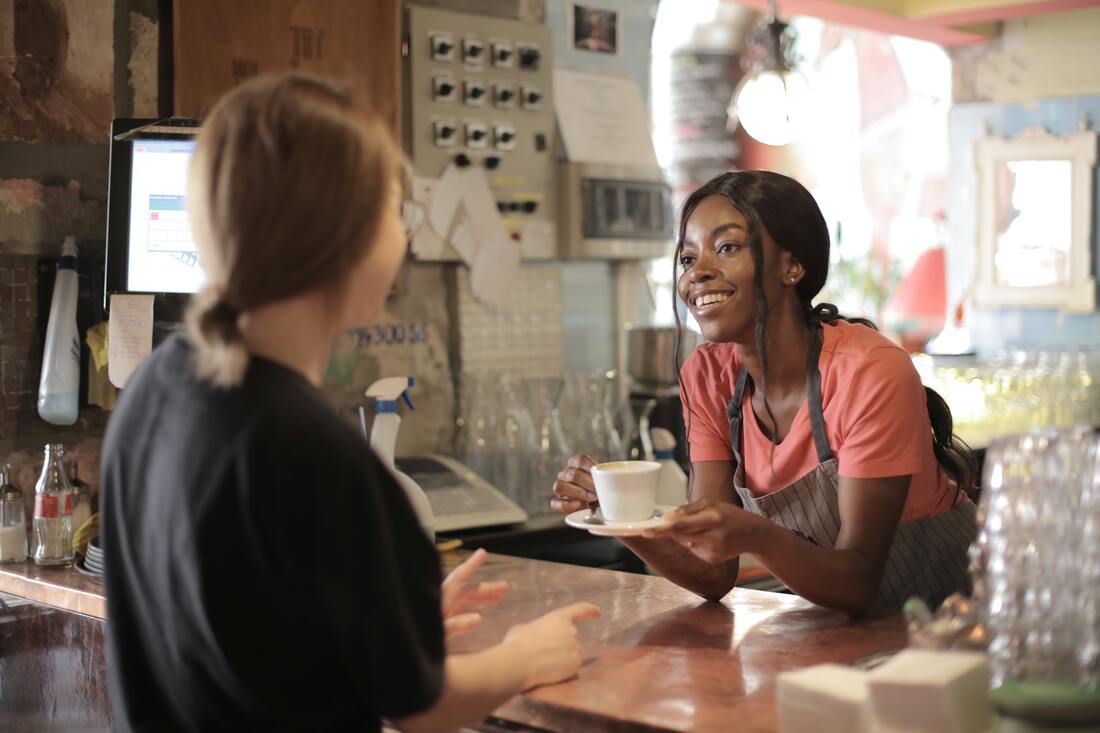
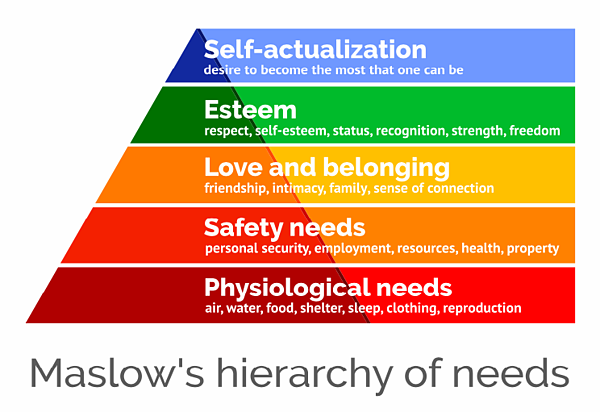

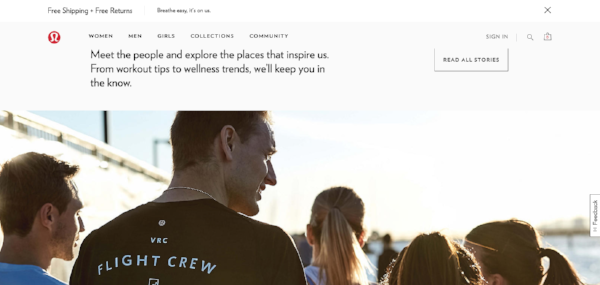
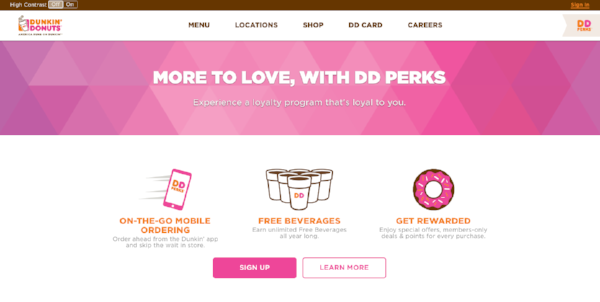


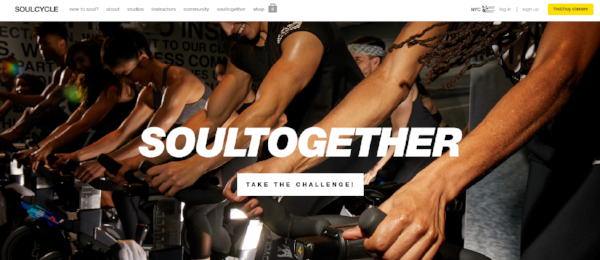
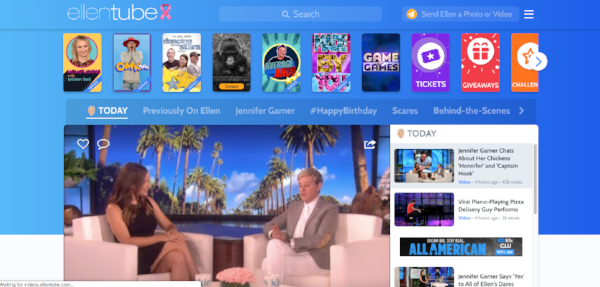

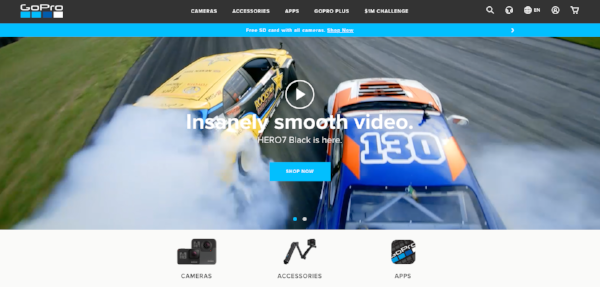


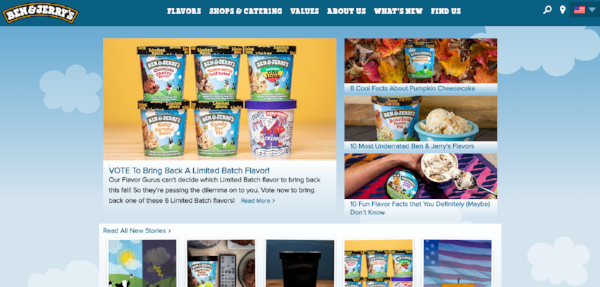

 RSS Feed
RSS Feed